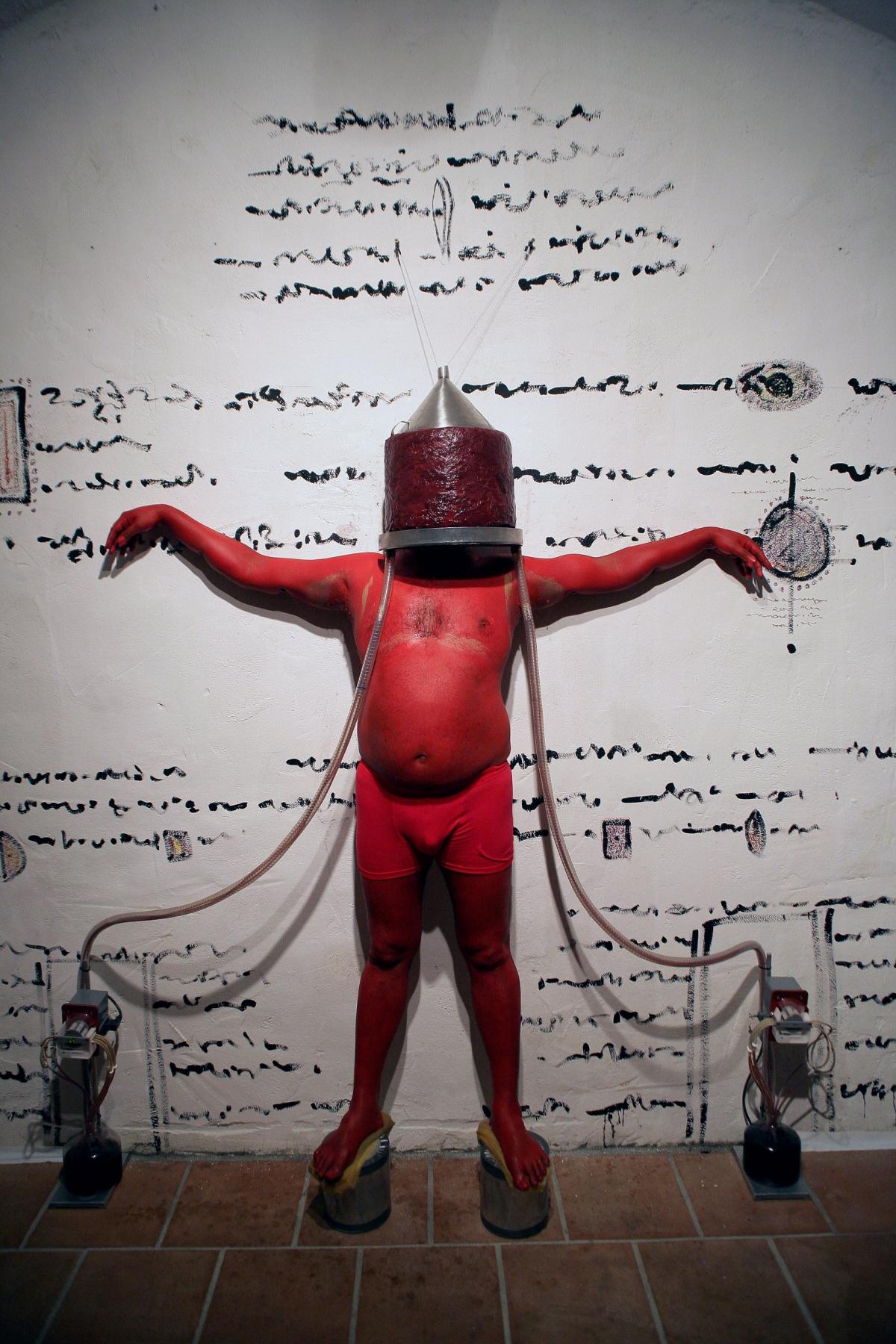Marika Vicari: Art Stays is no stranger to partnerships and collaborations across the Atlantic from the United States, Chile, Japan but for the first time in its history this year there will be artists from Australia and Singapore, your homeland. You are a multidisciplinary artist and the practice of performance is one of the most aggressive acts that are targeting to your body showing the limits and possibilities that are available for an artist: the body, mind and spirit. How much your origin has influenced your career?
S. Chandrasekaran: Coming from an Indian culture, the most fundamental concern is maintaining the balance between body, mind and spirit. We have great Indian literatures such as Yoga; which has taught us to maintain the balance between body, mind and spirit. In earlier years of my life, I have undertaken Yoga practices. It is through Yoga, I am able to push the boundaries of the bodily presences, such as pain.
MV: How born the alliance with the Australian biologist Gary Cass? And what brought you?
SC: I can with in contact Gary Cass during my residency with SymbioticA group. Our alliance contributes to works that challenges meaning to aesthetic and language in relation between Art and Science. I was able to develop new directions in exploring the performative elements in relation to modern technology.
MV: The performance Bleeding Angel, has been for years an integral part of your research. What satisfies you unlike other media? What is performance areas you can explore the art and science alone, to structural differences, are not shown to address?
SC: I am working on two main projects. The first project is Quasi-living theatre production. In this work, I will developing a project title Infinite Saree , in collaboration with Scientist, 3D filmmaker, and Choreographer. The second project is Quasi-Living Sculptures, a collaboration with Space scientist.
MV: Of all things, Ptuj is famous for its vineyards in Europe, a strong smell and pleasure of wine sipped in the company in the cellars. With this premise, you and Gary Cass submitted under Art Stays, an event that combines science and art, the ritual of a violent action on the human body, wine and bacteria with the transition from one state to another. Can you describe what is it?
SC: Firstly, we have redesigned this project to fit into the concept of Ptuji. The Bleeding Angel in Ptuj will pushes the relation science, art, ritual in relation to everyday realities. We want the audience to get connect through our work by looking at objects, smell of fermented wine and bodily connections to bacteria presence.
MV: What do you think will be the public reaction in Ptuj? How much do you think is important to involve the city in the Festival events? What role does a contemporary artist have in the creative process?
SC : We are sure, that public will be excited to know the new directions in today’s’ contemporary art. Therefore, it is important for us to involve in Ptuj Festival events. In doing so, it will position Ptuj as a contemporary art city in dealing with avante garde projects. The role of a contemporary artist is undertake all challenges and push the language of art to all extreme.
MV: You have a lot of exhibitions and participation in big events including not least (where we met), the Venice Biennale, Documenta BEAP 2007 and 2007.
Sometimes, following your work I wonder if you care more about the practice (the technique) that you use or if you feel more the emotion, the involvement that the work and the artist launched to the public ...
SC: We need strong technique to express emotion. We need both. So, I trained to develop a good technique so that I am able to express in depth the meaning of art language through my work. I also believe, one need a good foundation, and so we can push the boundaries one’s emotional intellectually.
S. Chandrasekaran is an artist. Born in 1959, Singapore, where lives and works.
Marika Vicari is an artist and independent art curator. Born in Vicenza in 1979, where lives and works.







Comments 0
Say something